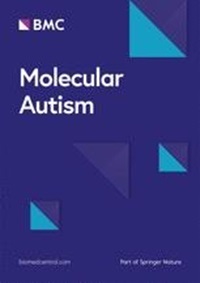与边缘型人格障碍和非临床对照组相比,自闭症成人情绪失调的生物社会相关性和预测因素
IF 6.3
1区 医学
Q1 GENETICS & HEREDITY
引用次数: 0
摘要
情绪失调(ED)是边缘型人格障碍(BPD)的核心症状,其病因归结于生物社会因素。在自闭症谱系障碍(ASC)中,虽然情绪失调很普遍,而且与幸福感下降(如自残、自杀)有关,但对它的研究一直不足,尤其是在成年人中。因此,进一步了解自闭症成人的 ED 情况以改进治疗至关重要。我们的研究调查了自闭症成年人的 ED、其行为相关性(如自残、自杀)和生物社会预测因素(相对于 BPD 和非临床对照组 (NC))。共有724名参与者(ASC=154人;BPD=111人;NC=459人)完成了11份自我报告问卷,评估了ED、ASC和BPD特质、共患疾病、自闭症、情感脆弱性和无效经历(如欺凌、自闭症伪装)。此外,还收集了发生自闭症行为的相关因素(即自残、自杀未遂和精神病住院史)。此外,还采用了组间分析、线性回归和机器学习(ML)模型来确定各组的 ED 预测因素。与NC相比,ASC的ED及其行为相关性更高,但比BPD更轻。虽然性别并不能预测 ED 的得分,但自闭症女性的 ED 风险因素有所增加,包括性虐待和伪装。有趣的是,BPD特质、情感脆弱性和自闭症对各组的ED得分都有很强的预测作用。使用ML模型,感觉敏感性和自闭伪装与ASC的ED有关,而ADHD症状与BPD的ED有关。ASC和BPD的诊断都是自我报告的,因此我们无法检查其准确性。此外,我们没有探讨不同变量之间的交易关系和调节/中介关系。此外,我们的研究是横断面的,无法就 ED 与其他临床维度之间的关系的方向和因果关系得出结论。与 ASC 和非临床对照组相比,BPD 患者的 ED 及其行为相关性更强。在 ASC 组中,尽管自闭症女性更容易受到 ED 风险因素的影响,但她们的 ED 没有性别差异。无论诊断结果如何,BPD 特征、情绪脆弱性和自闭症都是 ED 的核心因素。感官敏感性和自闭症伪装似乎是自闭症成人发生 ED 的特异性预测因素,但这两点并不那么重要。本文章由计算机程序翻译,如有差异,请以英文原文为准。
The biosocial correlates and predictors of emotion dysregulation in autistic adults compared to borderline personality disorder and nonclinical controls
Emotion dysregulation (ED) is a core symptom of borderline personality disorder (BPD), whose aetiology has been attributed to biosocial factors. In autism spectrum condition (ASC), although ED is prevalent and is associated with decreased well-being (e.g. self-harm, suicidality), it has been understudied, especially in adults. It is therefore crucial to further understand ED in autistic adults to improve its treatment. Our study investigates ED, its behavioural correlates (e.g. self-harm, suicidality) and biosocial predictors in autistic adults relative to BPD and nonclinical controls (NC). A total of 724 participants (ASC = 154; BPD = 111; NC = 459) completed 11 self-reported questionnaires assessing ED, ASC and BPD traits, co-occurring disorders, alexithymia, emotional vulnerability and invalidating experiences (e.g. bullying, autistic camouflaging). The occurrence of ED behavioural correlates (i.e. self-harm, history of suicide attempts, and psychiatric hospitalizations) was collected. In addition, between-groups analyses, linear regressions and machine learning (ML) models were used to identify ED predictors in each group. ED and its behavioural correlates were higher in ASC compared to NC, but milder than in BPD. While gender did not predict ED scores, autistic women had increased risk factors to ED, including sexual abuse and camouflaging. Interestingly, BPD traits, emotional vulnerability and alexithymia strongly predicted ED scores across the groups. Using ML models, sensory sensitivity and autistic camouflaging were associated with ED in ASC, and ADHD symptoms with ED in BPD. ASC and BPD diagnoses were self-reported, which did not allow us to check their accuracy. Additionally, we did not explore the transactional and the moderating/mediating relationships between the different variables. Moreover, our research is cross-sectional and cannot draw conclusions regarding the direction and causality of relationships between ED and other clinical dimensions. ED and its behavioural correlates are heightened in BPD compared to ASC and nonclinical controls. In the ASC group, there were no gender differences in ED, despite the heightened exposure of autistic women to ED risk factors. BPD traits, emotional vulnerability, and alexithymia are core to ED regardless of diagnosis. Although less central, sensory sensitivity and autistic camouflaging seem to be specific predictors of ED in autistic adults.
求助全文
通过发布文献求助,成功后即可免费获取论文全文。
去求助
来源期刊

Molecular Autism
GENETICS & HEREDITY-NEUROSCIENCES
CiteScore
12.10
自引率
1.60%
发文量
44
审稿时长
17 weeks
期刊介绍:
Molecular Autism is a peer-reviewed, open access journal that publishes high-quality basic, translational and clinical research that has relevance to the etiology, pathobiology, or treatment of autism and related neurodevelopmental conditions. Research that includes integration across levels is encouraged. Molecular Autism publishes empirical studies, reviews, and brief communications.
 求助内容:
求助内容: 应助结果提醒方式:
应助结果提醒方式:


